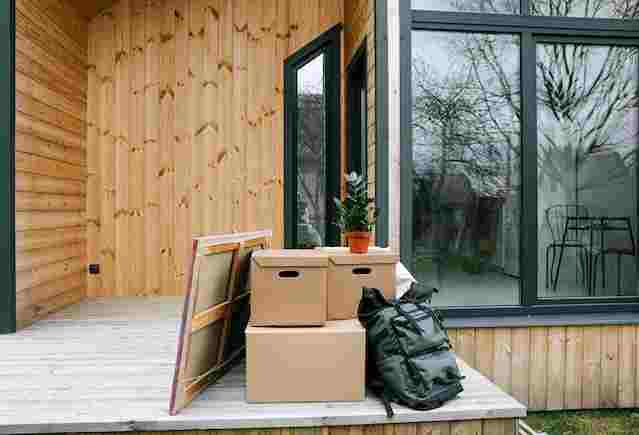Installing insulation in a mobile home can be expensive, but it is a necessary step to make sure your home is comfortable and energy efficient. If you are wondering how much mobile home insulation cost and if there are any home insulation grants available to help you with the cost, then this blog will provide all the answers. Read on to learn more about the cost of mobile home insulation and the grants that are available to assist you.
/div>
The Cost Of Mobile Home Insulation
When it comes to mobile home insulation, there are many factors that can affect the cost. From the type of insulation used, to how much of it is needed, the cost of insulation for a mobile home can vary widely. Generally speaking, however, it is possible to find quality insulation for a mobile home for a relatively affordable price.
Floor insulation is often one of the most important investments in terms of mobile home insulation, as floors tend to be the primary source of air leakage and heat loss in a mobile home. A variety of options exist when it comes to insulating your flooring, ranging from fiberglass batting and rigid foam board, to spray foam insulation. Depending on the size and type of your mobile home, the cost of floor insulation can range anywhere from $500-$1,500.
Home Insulation Grants:
If you are looking to save money on your mobile home insulation project, there are several grants available to assist you with the cost. The U.S. Department of Energy offers various grant programs to help homeowners make their homes more energy efficient. There are also grants available from state and local governments that can help cover the cost of materials and labor for mobile home insulation.
Additionally, there are a number of nonprofits dedicated to helping low-income families make their homes more energy efficient, offering both financial assistance and resources for the project.
When it comes to wall insulation for a mobile home, the cost can also vary widely. A rigid foam board is often a popular choice, as it can provide good insulation for a low cost. Spray foam insulation is another option that can help keep air from escaping through the walls of your mobile home. Depending on the size of the project, wall insulation can cost anywhere from $500-$2,000.
Types Of Insulation For Mobile Homes
When it comes to insulating your mobile home, there are a few different options. One of the most common types of insulation is fiberglass batting, which is available in rolls and can be easily installed in any mobile home. Another option is foam insulation, which is sprayed onto the walls and floors for greater coverage.
Foam insulation is often more expensive than fiberglass but it is more effective at reducing air leaks. Finally, you can also opt for a hybrid insulation that combines both foam and fiberglass.
No matter which type of insulation you choose, make sure to get a professional to install it in order to ensure that it is done correctly and that it will last for years. If you are on a tight budget, do not forget to look into grants that may be available to help cover some of the costs.
Grants Available For Mobile Home Insulation
If you are considering installing insulation in your mobile home but are worried about the cost, there are several options available to you. The U.S. Department of Energy offers grants specifically designed to help homeowners reduce their energy costs by improving the insulation and weatherization of their homes.
These grants may cover up to half of the total cost of the insulation and other measures, with the homeowner being responsible for the remaining costs.
In addition, some states also offer grant programs which can help cover the cost of insulation and energy efficiency improvements. For example, in California, the Self-Help Housing Program provides grants to cover up to 75% of the cost of installing new insulation in a mobile home. In addition, the California Energy Commission has several other grant programs that can help reduce the cost of insulation for mobile homes.
Finally, local utility companies may also provide funding for energy efficiency improvements. Check with your local utility company to see what incentives they may offer to help you save money on your energy costs.
By taking advantage of these grants and other funding sources, you can save significant amounts of money when it comes to installing insulation in your mobile home. Be sure to do your research to find out which programs may be right for you, and don’t hesitate to contact the relevant agencies if you have any questions.
How to Apply For Grants
If you are looking for financial assistance to help you with the cost of mobile home insulation, there are several grants available that can provide you with the funds needed to complete your project. The grants available vary by state and may require an application process.
In most cases, these grants are for low-income households who need help with the cost of home improvements such as insulation. To find out if you qualify for a grant, contact your state’s Department of Housing and Urban Development (HUD) or your local government agency for more information.
When applying for a grant, make sure you include all necessary documentation such as proof of income and estimated costs for your insulation project. Additionally, be sure to submit your application before the deadline to ensure your request is considered.
In some cases, grants may also require additional information such as a written proposal outlining how the funds will be used, letters of recommendation from a professional or a third-party contractor, and other documents related to your project.
Finally, if you have already begun your insulation project but require additional funds to complete it, make sure you mention this in your grant application. With the right documents and information, you can get the funding you need to make your mobile home more energy efficient.
Mobile Home Insulation Grants Eligibility and Deadline 2023
Mobile home insulation grants are available to help offset the cost of improving the energy efficiency of your home. To be eligible for a grant, you must be a low-income household that meets certain criteria. Generally, you must have an income at or below 80% of the median income for your area to be eligible for most grants.
The deadline for applications for mobile home insulation grants in 2023 is typically at the end of the calendar year. The exact deadline varies from state to state and can change from year to year, so it is important to check with your local government for specific information. Additionally, some states may have additional requirements and deadlines, so make sure you check with them as well.
Once you have determined your eligibility, you should begin the process of applying for a grant. You will likely need to provide detailed information about your current insulation situation, including photographs and a survey of the condition of your insulation. Make sure to research all grants thoroughly to ensure that you are applying for the ones that best suit your needs.
By applying for mobile home insulation grants, you can make great strides in improving the energy efficiency of your home. Doing so not only helps save you money on monthly energy bills, but it also makes a difference in helping to reduce emissions and fight climate change.
Other Ways to Save On Home Insulation Costs
1. Look into energy-efficiency tax credits and rebates – Many states offer energy-efficiency tax credits or rebates that can reduce the cost of mobile home insulation. Be sure to research your local programs to determine if you are eligible for any of these incentives.
2. Utilize low-cost DIY projects – DIY projects can be a great way to save on insulation costs. If you are handy and are up for a project, you can consider tackling some of the easier projects yourself, such as installing fiberglass batt insulation or caulking gaps around windows and doors.
3. Get free insulation from your utility company – Depending on where you live, you may be able to get free insulation from your local utility company. Contact your energy provider to find out if they offer any free or low-cost insulation programs.
4. Shop around for the best prices – Comparing different materials and suppliers can help you find the best deals on home insulation materials. Do not forget to check online retailers too; you may be able to find better prices than local stores.
5. Negotiate with contractors – If you choose to hire a contractor for your mobile home insulation, you can try negotiating for lower prices or other discounts. Be sure to compare estimates from multiple contractors to ensure that you are getting the best deal.
what is the best insulation for under a mobile home, best insulation for mobile home walls, mobile home underbelly insulation, mobile home insulation near me, how to super insulate a mobile home, best insulation for mobile home roof, mobile home floor insulation











